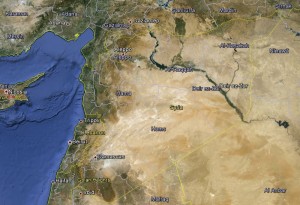While many pundits continually debate a timeframe for Assad’s downfall, the regime is on the offensive, pushing back their estimations. In recent weeks, Assad’s forces have succeeded in securing several tactical victories, mainly in Damascus, Idlib Province, and around Homs, all the while preventing additional rebel gains around Deraa. Overall, those tactical developments are likely to further secure the capital’s northern and southern flanks and supply lines to other government-controlled cities while furthering the process of isolating and eliminating opposition strongholds around Damascus. The rebels, therefore, will not be taking Syria’s capital anytime soon.

Syrian military and loyalist gains in Damascus are likely to continue in the near term, as tenuous advances in Homs and Idlib provinces and the continued holding of strategic areas in southern Syria will inhibit rebel efforts to bring more fighters and supplies to the four Damascus fronts. While not given the publicity it deserves, much of Assad’s recent successes in the Homs region could be credited to Hezbollah’s increased intervention from Lebanon. This intervention has furthered tensions in Lebanon, but burgeoned Assad’s strength between Damascus, the Alawite stronghold of Latakia, and Homs. It now appears that both Hezbollah and Syrian government troops are set to enter the main rebel-held town in the area, al-Qusayr. Rebel fighters inside Damascus, meanwhile, are increasingly finding themselves isolated and outgunned. They are left mostly defending positions determined following the stalling of their last capital offensive that began in November 2012.
The latest regime offensives in Damascus were a likely answer to rebel gains near Jordan and Israel, and thus meant to preempt another rebel attempt to ride their momentum for a push into the heart of Damascus. By taking the initiative, regime troops and loyalist militias have become increasingly able to isolate opposition bastions in the capital’s outskirts. Layered defenses in the capital, barrages of indirect fire, long supply lines, and local opposition to rebel gains are also likely contributing to the opposition’s general inability to move beyond their initial strongholds.
Concerning indirect fire, the Syrian regime can threaten any newly conquered Damascus neighborhood with destruction from its fortified batteries on the imposing Mount Qassioun ridge. This ability provides a notable deterrence against locales allowing rebel fighters to advance into their areas, all the while bolstering the ranks of local militias now allied to the government. Additionally, control over the Mount Qassioun ridge along the capital’s western edge will likely maintain the regime’s capabilities to maneuver forces under cover fire and contain rebel fighters with the same rocket and artillery barrages. The ridge, meanwhile, also serves as a natural and strategic barrier.
This barrier, along with nearby Hezbollah border positions, have largely prevented rebel forces from harassing or taking the government deployment areas west of Mount Qassioun ridge. This area is home to the Syrian 4th Armored Division, the Republican Guard, and Special Forces detachments, along with nearby Scud and other missile bases. The government’s ability to mobilize and maneuver troops from here and the center of Damascus is critical to Assad’s ability to maintain control over the capital. Without Mount Qassouin’s taking, rebel advances into the heart of the capital will remain hard to come by.
The Assad regime therefore is likely to ride its recent momentum and press on taking increasingly isolated rebel-held areas in the capital. Additional successes in Damascus’ more southwestern and southeastern suburbs could prompt the government to go on the offensive around Yarmouk and Tadamon in the capital’s south. Thus far, these regions have largely been subjected to artillery and aerial bombardments, but avoided suffering large scale armored and infantry advances.
The government is also likely to expand from recent and notable gains around Damascus International Airport in the southeast and throughout the Darayya area, on Mount Qassioun’s southern flank. There, the regime has reportedly managed to recapture several rebel-held areas near Darayya, south of the capital’s upscale district of al-Mazze, and near the military airport. Security around this airport will continue to facilitate supply runs from Assad’s allies, mainly Iran, Russia, and Iraq. Furthermore, recent reports indicate that government forces also managed to take most of Jdeidet al-Falal. According to opposition sources in the area, Assad’s troops and militias executed hundreds of people as they cleared the town’s streets following a rebel pullout. Ahead of the push, the town’s proximity to the Mount Qassouin ridge likely attracted heavy shelling from Assad’s well-fortified guns.
Although the regime seeks to fully retake the capital in the near future, this is still unlikely, given stiff resistance and persistent limitations confronting government troops. Heavy fighting, therefore, will continue in the capital for the near future as neither side is able to deliver decisive victories at this time. Additional rebel strongholds throughout Damascus’ environs, however, are likely to come under the threat of ground attack in the coming weeks, as the regime attempts to envelope, besiege, and then seize these areas. With government control over Damascus likely to continue into the medium term, Syria’s rebels will largely have to contend with defending their positions in the capital well into the civil war’s third year.
Click here to receive ongoing updates on the Syrian conflict.